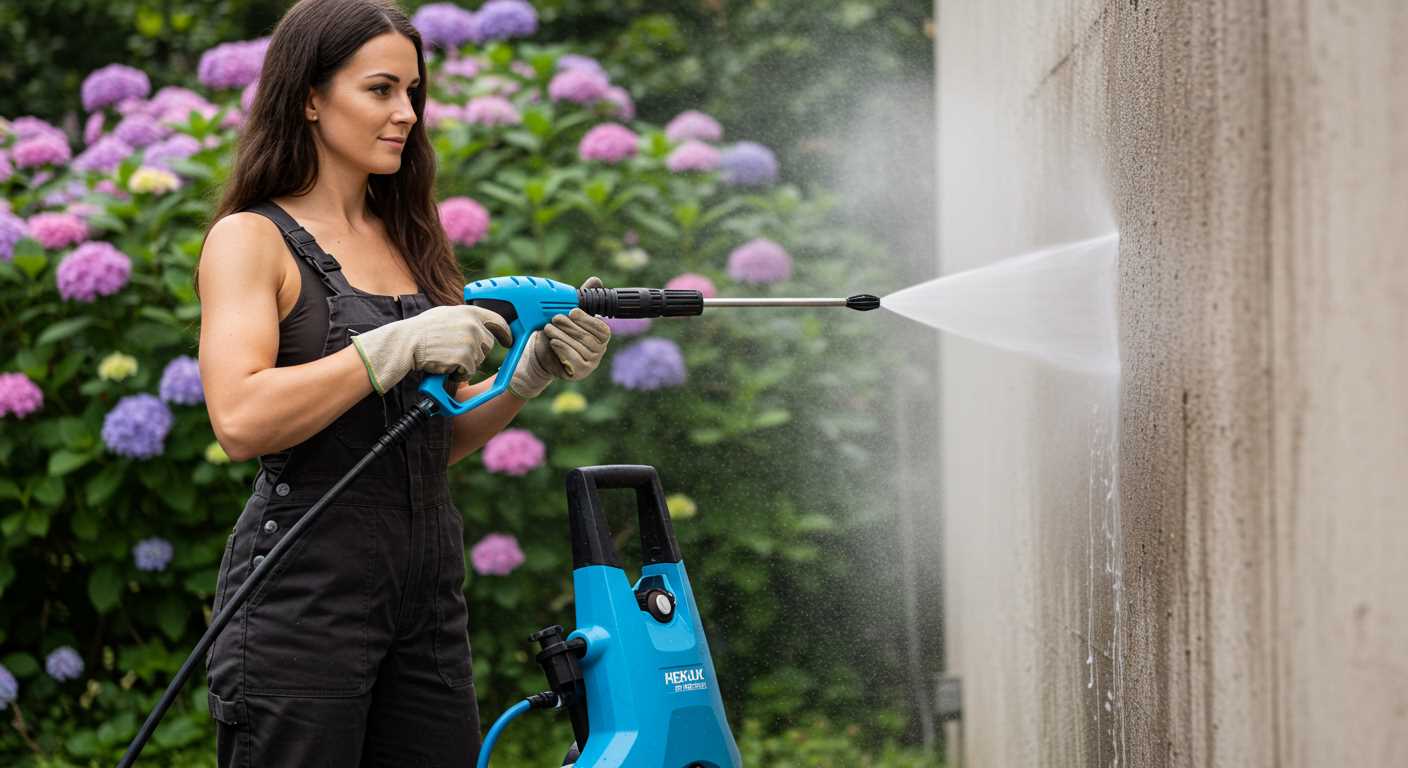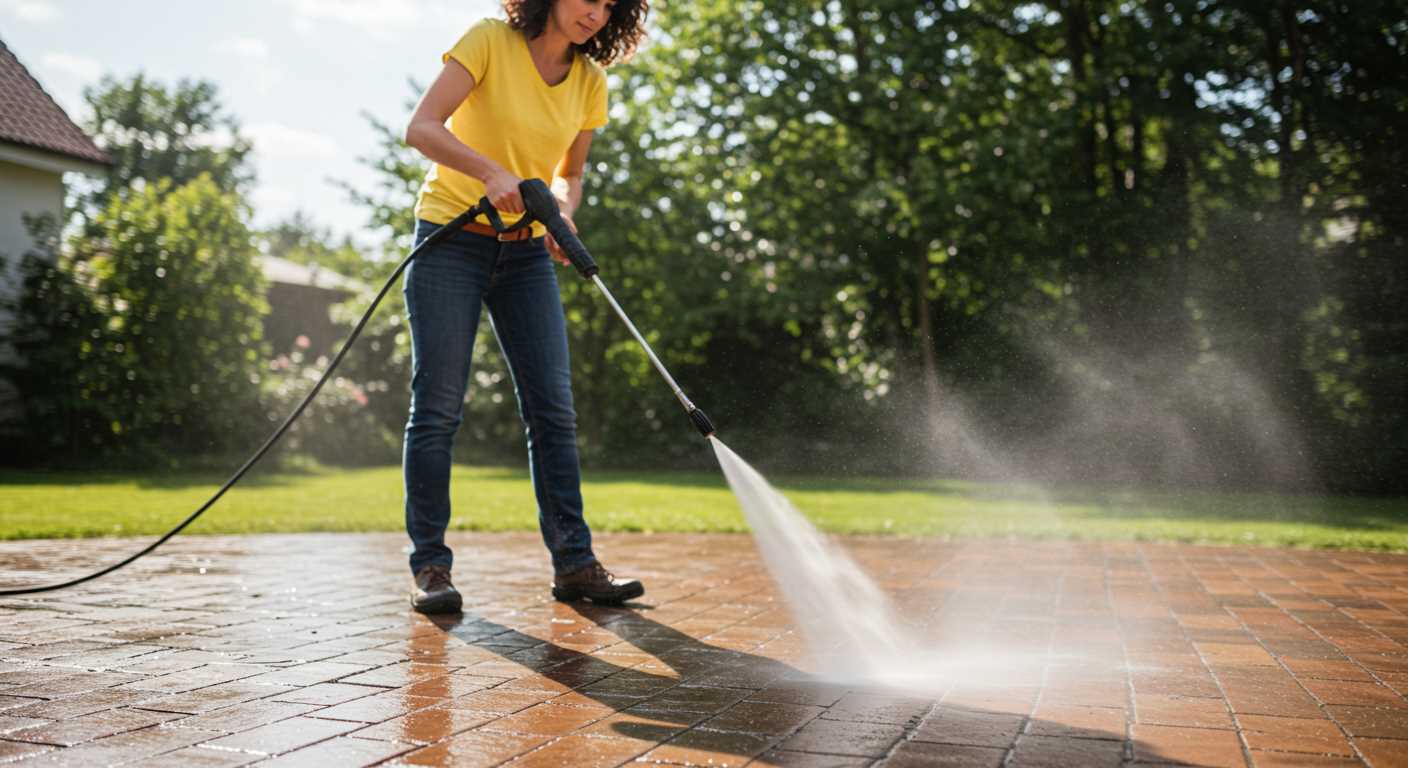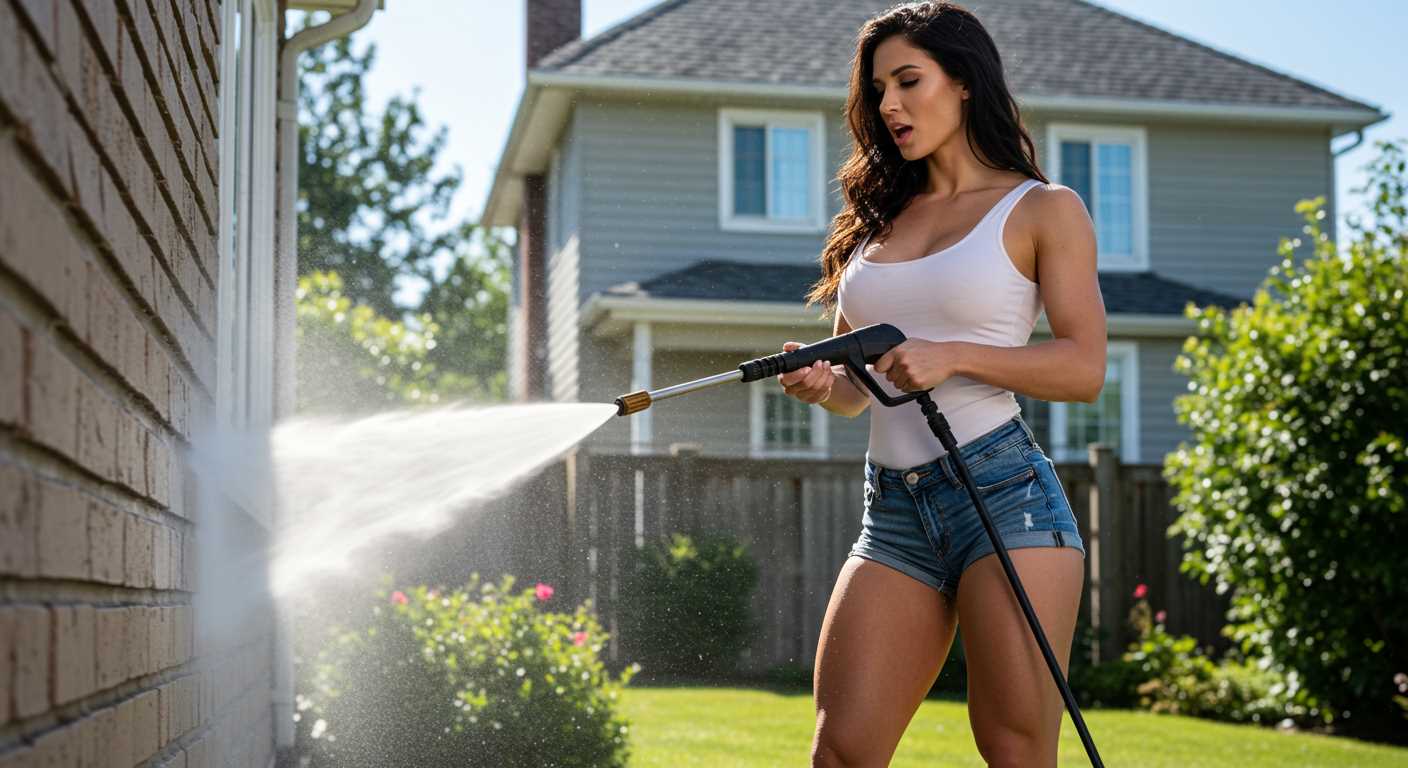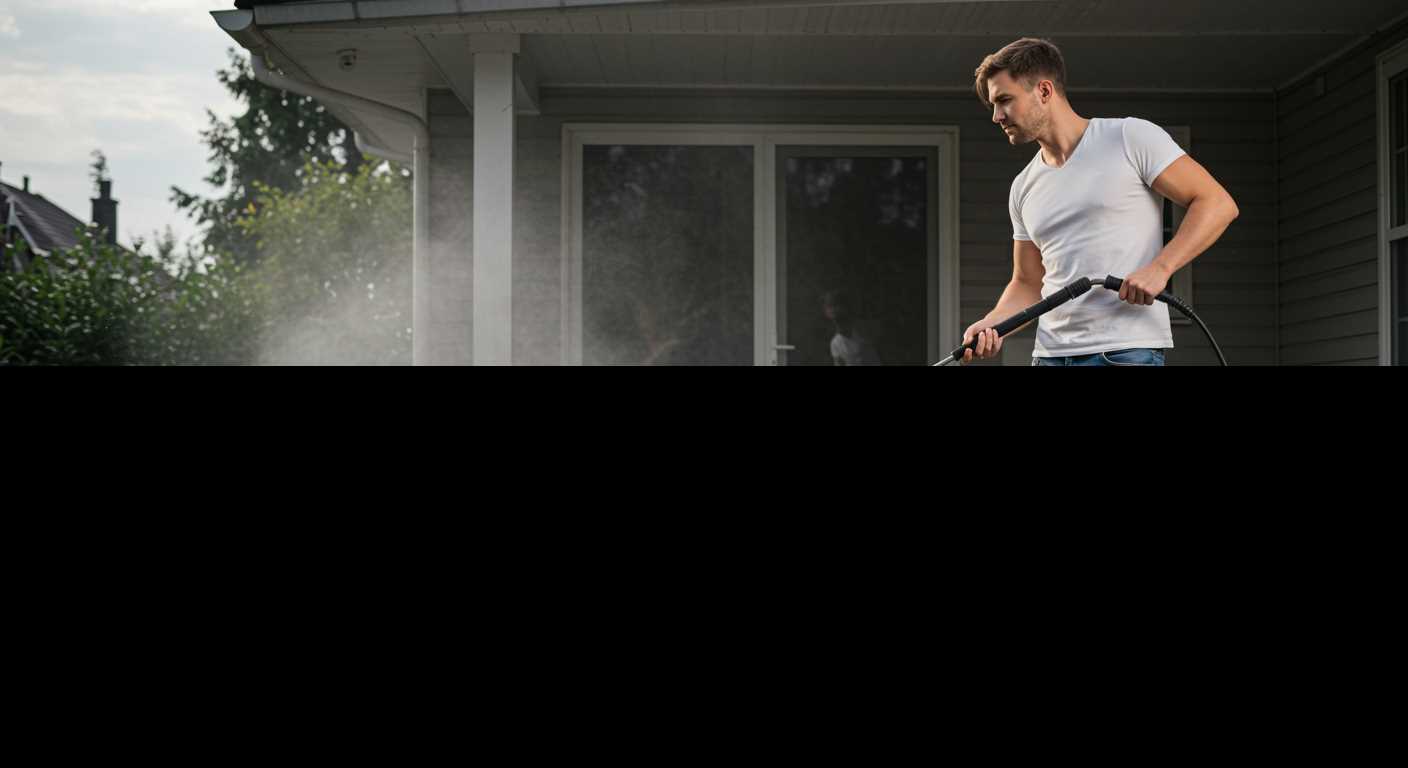



Operating a high-pressure cleaning machine without the addition of soap can be entirely feasible, particularly for light tasks or when cleaning surfaces that have minimal grime. In my extensive experience with various models and brands, I’ve found that while detergent certainly enhances cleaning efficiency, there are scenarios where plain water proves sufficient.
For instance, when dealing with dust and light stains on wooden decks or patios, a strong stream of water may adequately remove unwanted debris. It’s crucial, however, to adjust the nozzle accordingly; a fan or wide-angle spray may be more effective for these applications. On the other hand, tough stains, such as oil or moss, will typically require some form of cleaning agent to reach optimal results.
Before proceeding, it is wise to evaluate the surface type and the extent of staining. Stone paths and driveways often benefit from a simple rinse, but for vehicles or surfaces prone to grease, incorporating a suitable cleaner is advisable to achieve a thorough clean. Therefore, while operating a high-pressure cleaning unit without a soap solution can work for some cases, understanding the context will guide you to make informed choices for varying cleaning needs.
Understanding the Cleaning Capability of a Pressure Washer Alone

Using a high-pressure cleaning device without adding any cleaning solution is feasible for many tasks. Its ability to eject water at high velocity can effectively remove dirt, debris, and even some stains without the need for chemicals. However, there are specific factors to consider regarding its cleaning capacity.
When solely relying on water, the following aspects become crucial:
| Factor | Description |
|---|---|
| Pressure Level | The force of the water stream significantly impacts dirt removal. Higher pressure levels can dislodge stuck particles more effectively. |
| Water Temperature | Warm or hot water can enhance cleaning effectiveness, especially on greasy or oily surfaces. Cold water might not be as effective for heavy stains. |
| Nozzle Selection | The angle of the nozzle determines the concentration of the water stream. Narrower nozzles create a more focused jet, useful for targeted cleaning. |
| Surface Type | Smooth surfaces like tiles may clean effectively with just water, while porous materials might need additional scrubbing. |
Many successful cleaning tasks can be accomplished with just high-pressure water, especially for non-porous surfaces. However, for stubborn stains, a cleaning solution could facilitate the removal process more swiftly and thoroughly. Regular maintenance of the device is also crucial to ensure optimal performance when operating solely on water. Proper technique and surface assessment will influence the overall outcome.
Situations where detergent is not necessary

For light cleaning tasks like rinsing patios or driveways after regular maintenance, a mixture of high-pressure water alone suffices. Stubborn grime or dirt buildup doesn’t typically occur in these cases, making chemical assistants redundant.
Regular upkeep of outdoor furniture, such as chairs and tables, can be accomplished effectively with just water. A sturdy stream removes dust, debris, and minor stains efficiently without resorting to additional cleaning agents.
For natural stone surfaces, such as granite or slate, relying solely on water is advisable to prevent potential damage from harsh chemicals. Gentle cleansing preserves the integrity and appearance of these materials while still achieving satisfactory results.
Waxed surfaces, including certain wooden decks, should avoid chemical detergents altogether. High-pressure streams effectively remove dirt while maintaining the protective wax layer intact.
During colder months, if frost or light snow accumulates, washing away these elements relies solely on water. High-pressure jets can clear surfaces without the need for winter-specific solutions.
In environments with softer water, significant cleaning potential exists even without additives. The naturally lower mineral content allows for effective dirt removal, rendering chemical agents unnecessary.
Lastly, when dealing with occasional spills, such as mud from rain-soaked shoes, water alone is effective for quick cleanups. Prompt action often eliminates the need for additional cleaning products, keeping the area tidy with minimal effort.
The impact of water temperature on cleaning without detergent

Hot water significantly enhances the cleaning potential of equipment relying solely on fluid. I have consistently observed that temperatures above 60°C (140°F) can dissolve grease and grime more effectively than standard cold water.
Here are some advantages of utilising heated water:
- Enhanced soil removal: The higher thermal energy loosens stubborn dirt, allowing for easier dislodging.
- Reduced cleaning time: Hot water decreases the duration needed to achieve satisfactory results.
- Improved sanitisation: Elevated temperatures can eliminate more pathogens, making surfaces safer, especially in food-related environments.
On the flip side, using excessively hot fluid can damage delicate materials. Always assess the surface type before opting for higher temperatures.
To maximise cleaning efficiency without additives, consider these recommendations:
- Select appropriate nozzle types that achieve the desired spray pattern.
- Adjust the temperature based on the cleaning task; higher for grease; lower for dust.
- Conduct tests on inconspicuous areas to determine the best method.
In instances where sensitive surfaces are present, lower temperatures are preferable. However, in tougher scenarios like oil stains or mildew, hot water can prove to be a game changer. Always adapt your approach based on the specific cleaning challenge at hand.
Techniques for Maximising Pressure Washing Results without Additives
For optimal cleaning outcomes without relying on additives, several techniques can enhance the effectiveness of your equipment.
- Choose the Right Nozzle: Utilise a narrow nozzle for tougher stains; this concentrates the force of the water, increasing impact on dirt and grime.
- Adjust the Pressure Settings: Lower pressure settings are beneficial for delicate surfaces like wood, whereas higher settings work efficiently on concrete and stone. Always assess the surface first.
- Maintain Proper Distance: Position the nozzle approximately 12 to 24 inches from the surface. Adjusting this distance allows for better control and prevents damage.
- Utilise Hot Water: If possible, incorporate hot water. The elevated temperature aids in breaking down stubborn residues and enhances the cleaning capability of plain water.
- Time Your Cleaning: Clean during cooler parts of the day or shaded areas to prevent immediate evaporation, which can leave streaks or residues.
- Employ a Pre-Scrub: A quick scrub with a brush can dislodge stubborn debris before directing the stream, resulting in a more thorough clean.
- Work from Top to Bottom: Begin cleaning higher areas first and progress downward. This method prevents dirty water from running over already cleaned surfaces.
- Rinse Thoroughly: Ensure that all residues and dislodged dirt are completely rinsed away, leaving no remnants that could lead to surface staining.
Employing these methods ensures that cleaning tasks are accomplished effectively, maximising the results while relying solely on the power of water.
Potential risks of skipping detergent in cleaning tasks
Neglecting the use of cleaning agents can lead to inadequate results, leaving behind stubborn stains and built-up grime. The absence of detergent often necessitates multiple passes over a surface, which can extend the cleaning process significantly. This additional time not only wastes resources but may also frustrate the user.
Surface damage and wear
Using high-pressure water jets alone on delicate surfaces can cause damage. Materials like painted wood, certain types of siding, or even aged concrete can experience wear or chipping if subjected to intense water alone without the help of a cleansing solution. Abrasive interactions may result in costly repairs or the need for surface refinishing.
Environmental impact

Skipping detergents may lead to increased water usage, causing unnecessary strain on local water supplies. In areas facing water scarcity, this practice can be detrimental to conservation efforts. Additionally, residual dirt and grime that settle back into the environment after rinsing can lead to soil and water pollution.
Maintenance tips for your pressure washer when using it without detergent

Regularly inspect seals and connections for wear or damage before operation. This ensures optimal performance. A tight, leak-free configuration helps maintain pressure and avoids unnecessary loss of water flow.
Periodically clean the inlet filter to prevent debris from clogging the water flow. This simple step can enhance functionality and protect internal components from potential damage. Remember to rinse the filter and allow it to dry before reinstallation.
After each session, flush the system with clean water. This removes any residue left from prior cleaning tasks and prevents build-up inside the hoses and pump. Running clean water through the unit for a few minutes is sufficient.
Inspect the nozzle for any blockages or signs of wear. A quick clean or replacement of the nozzle can significantly improve water delivery and pressure. Ensure the nozzle is appropriate for the surface being cleaned to avoid damage.
Keep the unit stored in a dry, sheltered area to avoid exposure to harsh weather conditions. This prolongs the longevity of the equipment and reduces the risk of corrosion and other environmental damage.
Check and change the oil regularly if your model has an oil reservoir. Clean oil promotes efficient operation and helps prevent internal damage, especially during heavy use.
Utilise a descaling solution periodically if your water source has high mineral content. This helps in maintaining peak performance and extends the life of the system. Rinse thoroughly after using descalers.
Have a routine inspection of all hoses for kinks or signs of wear and tear. Replace any damaged hoses promptly to maintain water pressure and prevent leaks during operation.
Adhering to these maintenance suggestions ensures long-term reliability and performance in cleaning tasks. This approach saves both time and money in the long run.






